Svalbard, particularly Spitsbergen, was the first polar expedition cruise destination. It's no surprise that there are numerous trip programs available in this region. Among the most unique are the Around Spitsbergen and North Spitsbergen cruises.

As their names suggest, the primary distinction of these cruises is the areas they explore. The Around Spitsbergen cruise circumnavigates Spitsbergen, allowing visits to a variety of landing sites. The North Spitsbergen cruise, on the other hand, focuses on the island's northernmost shores, a prime location for spotting polar bears.

Each program offers numerous variations. Some trips emphasize birding or bear watching, others occur during the Arctic spring or summer, and some use the sailing ship Rembrandt van Rijn instead of larger motor vessels. This variety makes direct comparisons challenging and choosing between the two even harder.

To simplify things, this article will focus on comparing the main difference between these programs: the areas they visit, which can influence the activities available and the wildlife you might see.

Around Spitsbergen
Most Around Spitsbergen cruises, like the North Spitsbergen cruises, focus on polar bears and pack ice – two of Svalbard's highlights.

Around Spitsbergen trips offer a variety of landscapes, from tundra to moonscape-like landings and peaks. Locations visited may include the 5-km-long (3.1 miles) face of Monaco Glacier, the Seven Islands and Nordaustlandet, where polar bears can be seen and you can get just 870 km (540 miles) from the North Pole, and the bird cliffs of Alkefjellet, home to thousands of Brünnich’s guillemots.

Visits to select areas of Barentsøya are also planned, though some landing sites (like Freemansundet) may be inaccessible due to polar bears. Sundneset, a favorite among staff, offers stunning tundra scenery and hiking options with great viewpoints. The bird life here is excellent, and an old trapper’s hut can sometimes be seen.

In the Hornsund area of southern Spitsbergen, the trip offers views of spire-like peaks. Hornsundtind mountain rises to 1,431 meters (4,695 feet), and Bautaen exemplifies why early Dutch explorers named the island Spitsbergen, meaning “pointed mountains.” This area has 14 large glaciers and opportunities to spot seals, beluga whales, and polar bears.

Bell Sund is another highlight of the Around Spitsbergen itinerary, being one of Svalbard's largest fjord systems. A possible landing site here is Ahlstrandhalvøya, at the mouth of Van Keulenfjorden, where beluga skeletons can be seen. Fortunately, belugas were not hunted to extinction, and there’s a small chance of encountering a pod.

Ice can sometimes prevent full circumnavigations early in the season, which is a significant factor in the differences between various Around Spitsbergen cruises. However, this trip offers an incredible survey of a fantastic Arctic island.
North Spitsbergen
Wildlife is more concentrated in northwest Svalbard, the primary focus of North Spitsbergen voyages. While specific wildlife sightings cannot be guaranteed, the chances of spotting polar bears and other species may be slightly better in this area.
A popular location in this program is Raudfjorden, on the north coast of Spitsbergen, where you can view an expansive fjord and its many glaciers. Ringed and bearded seals might also be seen. The cliffs and shoreline of this fjord support thriving seabird colonies, rich vegetation, and the possibility of polar bears.

Sometimes, we sail into Fuglefjorden for views of Svitjodbreen and Birgerbukta, both breeding spots for great skuas and polar bear hangouts. On Birgerbukta, you can see 17th-century Basque ovens once used for cooking whale blubber. We might also visit Ytre Norskøya, a small island that served as a Dutch whaling lookout for many years.

On the northern side of Reindyrsflya, we see the largest tundra area of Spitsbergen. In Fuglesangen, we can view communities of little auks. Magdalenafjorden is another possibility on this cruise and is one of Spitsbergen's glacier-filled highlights. If we can make a shore visit, you’ll see the remains of 17th-century English whaling and large colonies of little auks.

Two other places of historic interest on the North Spitsbergen cruise are Ny London and Ny Ålesund, two of the northernmost settlements in the world. At Fuglehuken, there are massive seabird colonies and a haul-out site for harbor seals.
Shared locations for both Svalbard cruises
There are many overlapping sites in the Around Spitsbergen and North Spitsbergen voyages. One of these is Liefdefjorden and Monaco Glacier, a feeding spot for thousands of kittiwakes and a polar bear hunting ground.
Both voyages also tend to visit Hinlopen Strait, home to bearded seals, ringed seals, and polar bears – and at the entrance, there’s even the possibility of blue whales.
Other shared locations include the bird cliffs of Alkefjellet, the Seven Islands, and Nordaustlandet, where reindeer, pink-footed geese, and walruses are common sights. Both cruises may take you close to the 80th parallel north, near the northernmost sailing point at the 82nd parallel.
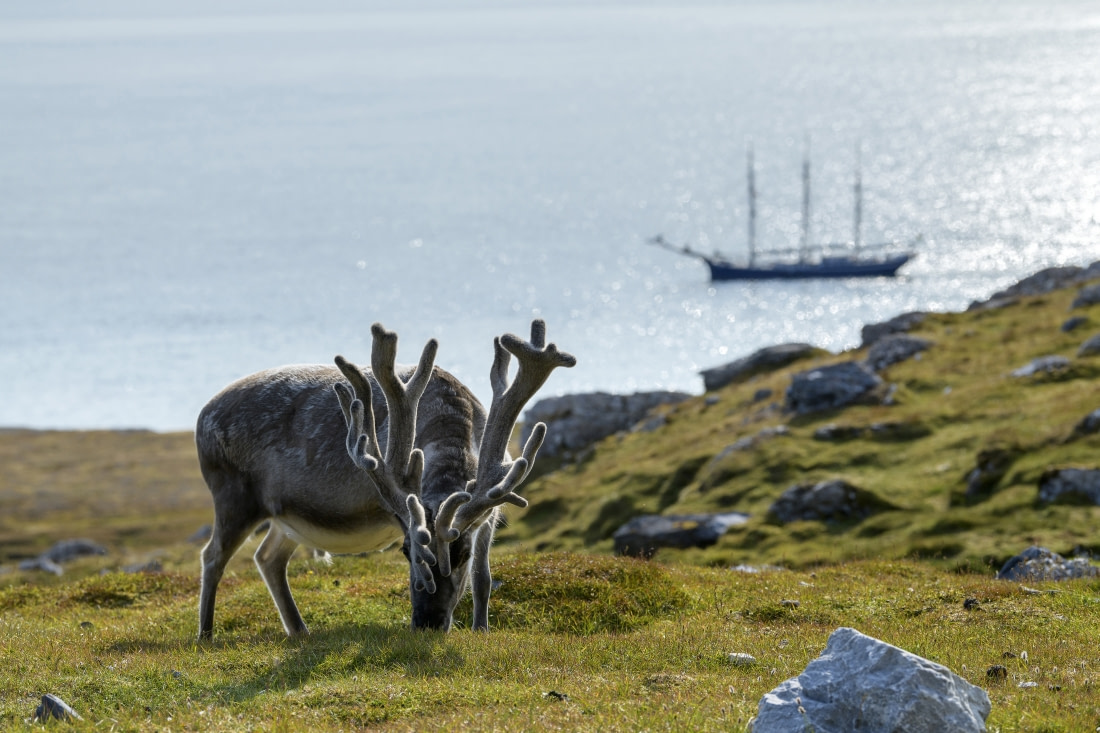
Which Svalbard trip should you book?
The answer depends on which areas, activities, and wildlife most appeal to you.
Both cruises are too varied to be easily compared, and factors like ice, weather, and wildlife can significantly impact the experience. Even cruises with identical itineraries can differ greatly due to these variables.
Consider whether you want a broader survey of locations or a deeper exploration of a smaller area when making your decision.
Regardless of your choice, you are sure to have a once-in-a-lifetime experience. Both cruises offer the chance to see unique wildlife and breathtaking landscapes and ice formations, whether on foot, in a kayak, on skis, or even underwater.
Header photo by Andrew Peacock.



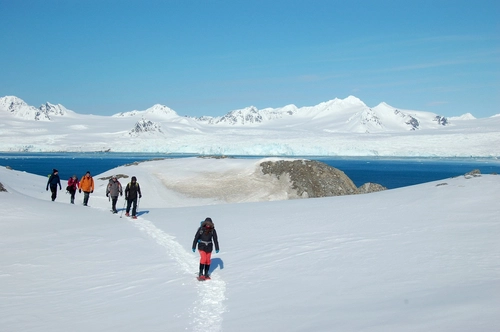

Related Trips
Blog


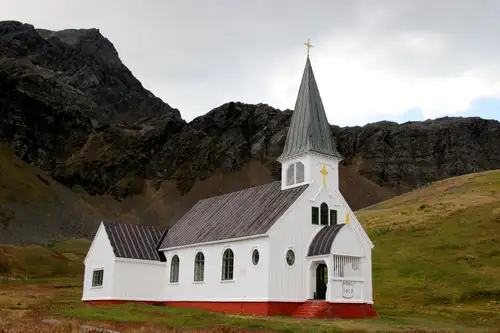
Churches in Antarctica

5 Misconceptions You Might Have About Greenland

Six Facts About the Crabeater Seals of Antarctica

Arctic Foxes: Constant Gardeners of the Arctic

“The polar bear will still be there”

Five Reasons You Should Cruise the Ross Sea Immediately

Five Birds You Might See on Your Greenland Cruise

10 Tips for Photographing the Northern Lights

12 Tips to Help Keep Birds Safe During an Antarctic Cruise

10 Weather-Fueled Facts about Antarctica
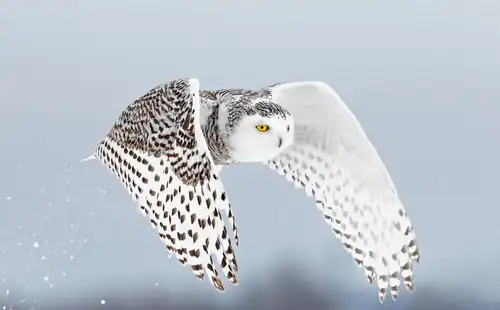
Secrets of the Snowy Owl: Habitat, Adaptations, and Other Facts

17 Reasons to Cruise the Falklands
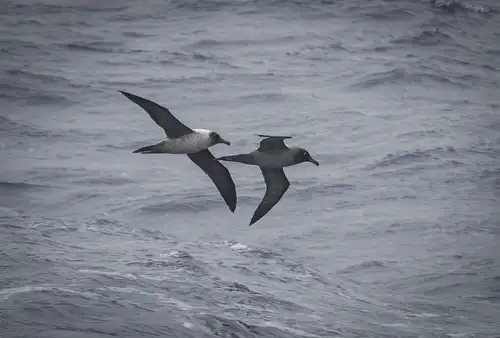
Birds of the South: 33 Antarctic Birds and Seabirds

Eight Engaging Reindeer Facts

Science of the Ross Ice Shelf

Five Reasons Why Snowshoeing is a Perfect Polar Activity
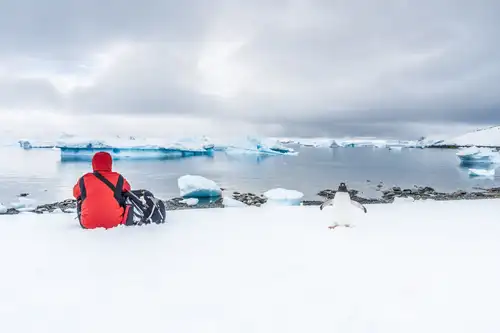
Adding Antarctica to Your Seven-Continents Bucket List

Polar Marine Visitors: the Whales of Antarctica and the Arctic

Adélie Penguins: the Little People of the Antarctic







 8 Days / 7 Nights
8 Days / 7 Nights





